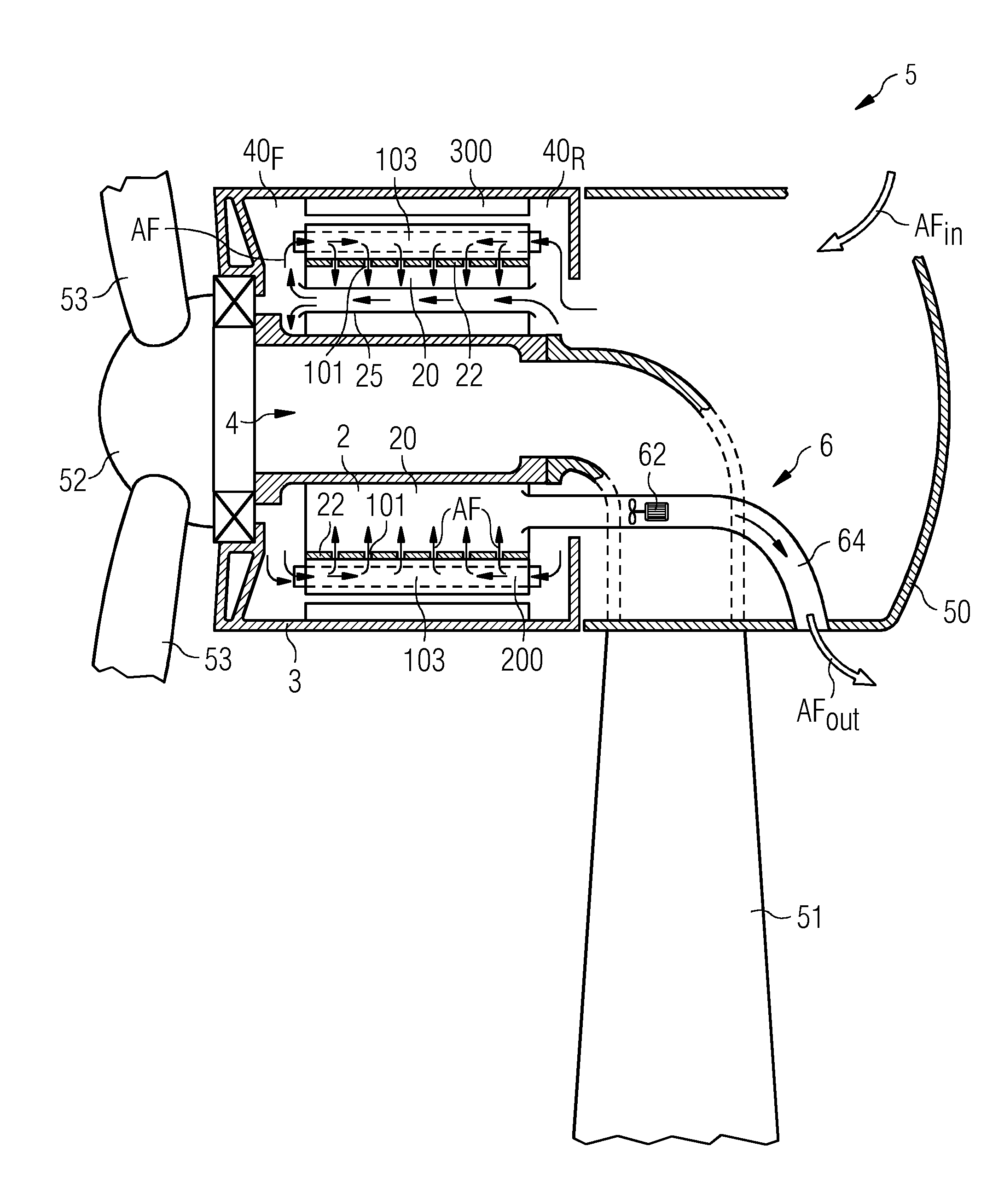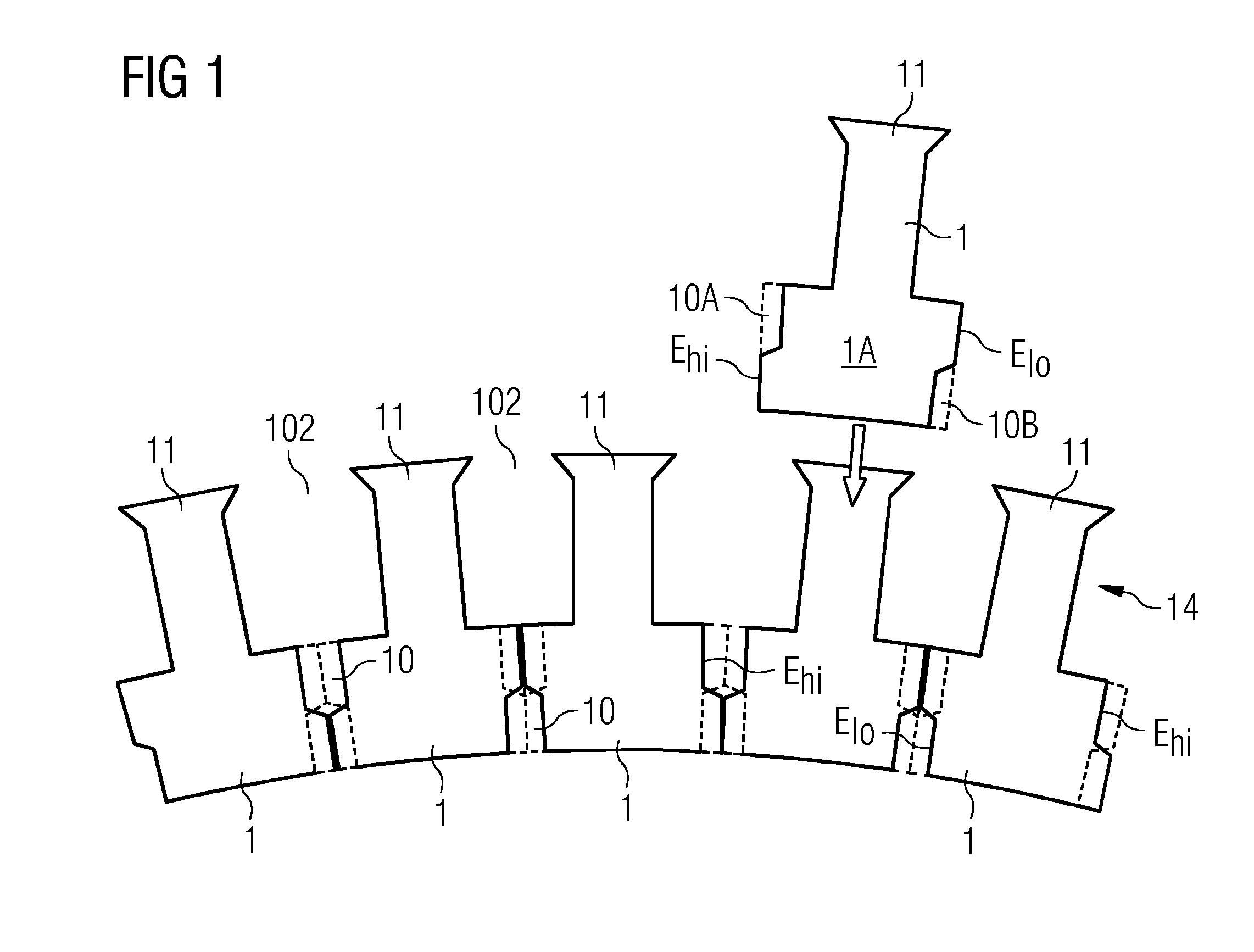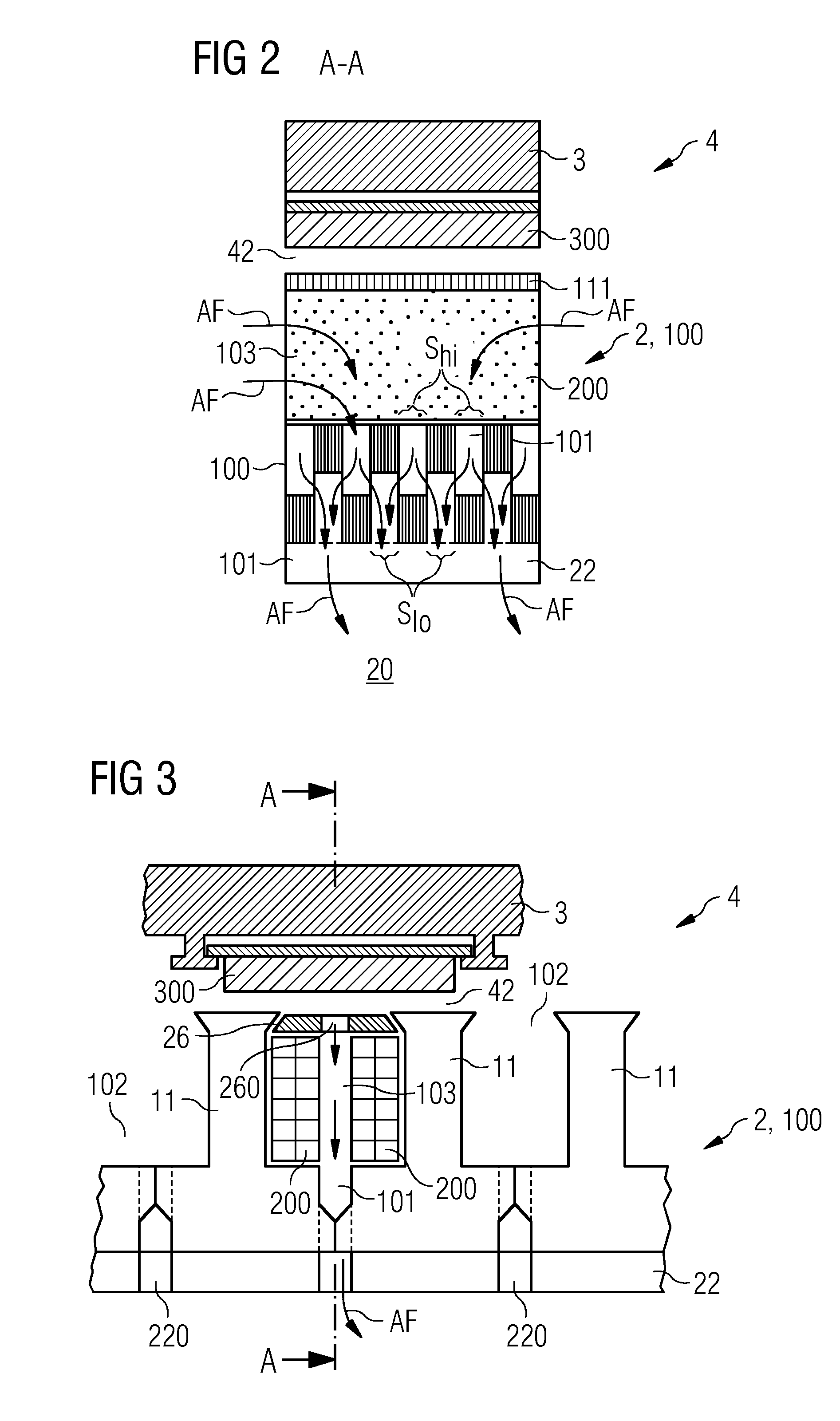Generator armature
a technology of generators and armatures, which is applied in the direction of electric generator control, machine/engine, magnetic circuit shape/form/construction, etc., can solve the problems of undesirable high temperature in the windings, high electrical current in the windings, so as to reduce the effective cooling of the windings over their entire length, increase the efficiency of heat transfer from the windings, and reduce the effect of cooling airflow in the axial cooling channel
- Summary
- Abstract
- Description
- Claims
- Application Information
AI Technical Summary
Benefits of technology
Problems solved by technology
Method used
Image
Examples
first embodiment
[0038]FIG. 1 shows a schematic representation of a laminate sheet 1 according to embodiments of the invention. The diagram indicates the positions of a number of identical laminate sheets 1 with a first shape 1A in an annular laminate layer 14 (shown only partially). In this embodiment, each laminate sheet 1 comprises a single armature tooth protrusion 11. The diagram shows that the laminate sheet 1 can be “flipped” to give its mirror image, so that a series of such laminate sheets 1 can be assembled to give the annular laminate layer 14. For an armature with n poles, n such laminate sheets 1 are required in each annular laminate layer 14 or laminate sheet ring 14. The number of annular layers 14 required to assemble a stack will depend on the depth of the armature. When stacked, the armature tooth protrusions 11 result in an arrangement of armature teeth separated by axial winding slots 102 into which the stator windings can be placed.
[0039]The diagram shows that each laminate shee...
second embodiment
[0044]FIG. 5 shows a schematic representation of a laminate sheet 1 according to embodiments of the invention. Here also, the diagram indicates the position of the laminate sheet 1 in an annular laminate layer 14. In this embodiment, each laminate sheet 1 comprises an odd number of stator tooth protrusions 11, two complementary side edges Ehi, Elo to give notch portions 10A, 10B, and an even number of complete notches 10. In this case also, the laminate sheet 1 can be “flipped” to give its mirror image, and a series of such laminate sheets 1 can be assembled to give an annular laminate layer. By offsetting a stack of such layers from another layer stack by one stator tooth, so that a series of “upper” notches adjoins a series of “lower” notches, a labyrinthine arrangement of radial cooling channels is achieved as explained in FIG. 1 above.
[0045]Although the present invention has been disclosed in the form of preferred embodiments and variations thereon, it will be understood that nu...
PUM
 Login to View More
Login to View More Abstract
Description
Claims
Application Information
 Login to View More
Login to View More - R&D
- Intellectual Property
- Life Sciences
- Materials
- Tech Scout
- Unparalleled Data Quality
- Higher Quality Content
- 60% Fewer Hallucinations
Browse by: Latest US Patents, China's latest patents, Technical Efficacy Thesaurus, Application Domain, Technology Topic, Popular Technical Reports.
© 2025 PatSnap. All rights reserved.Legal|Privacy policy|Modern Slavery Act Transparency Statement|Sitemap|About US| Contact US: help@patsnap.com



